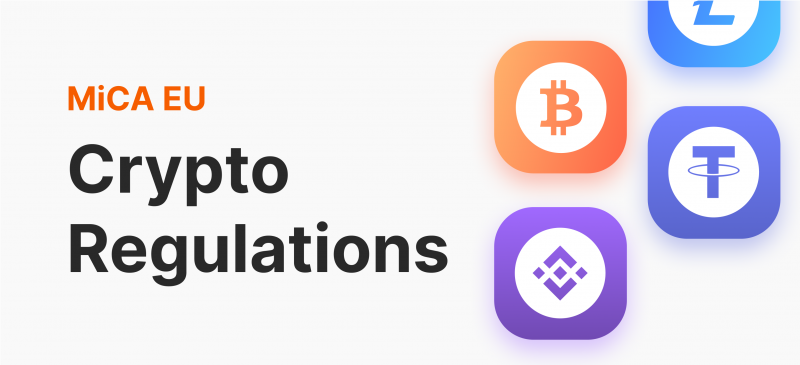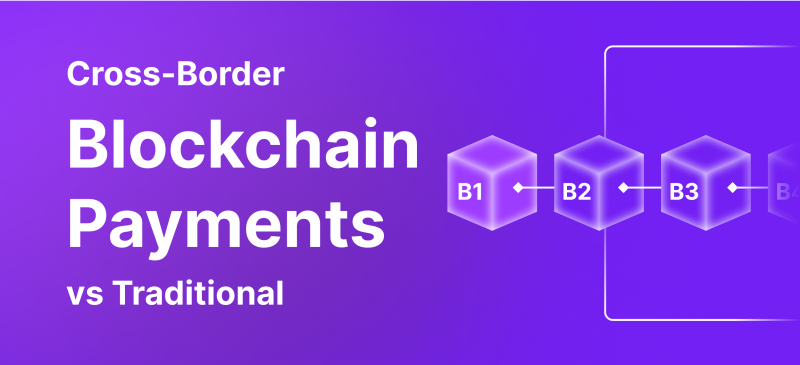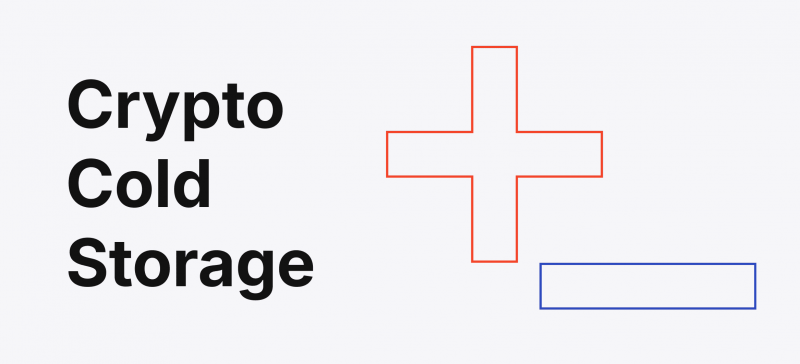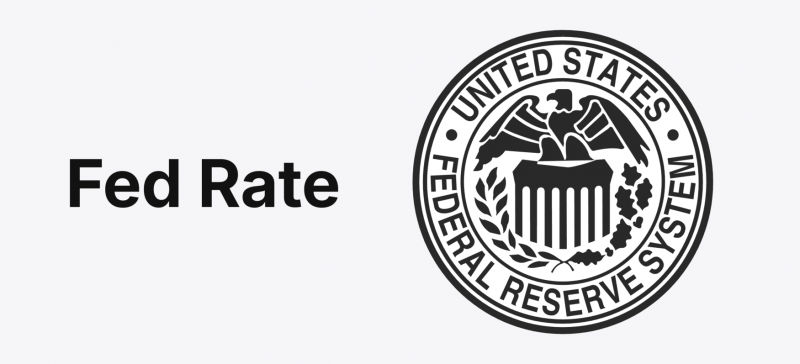Over the last couple of years, regulators and financial authorities have been busy regulating the crypto landscape. The SEC attempted multiple times to standardise Bitcoin and Ethereum as national securities while suing exchanges for trading unregistered assets.
However, the scenery in Europe was a little different. The existing financial services legislation strictly observes crypto exchanges and traders against money laundering and fraud while each country issues their own crypto license.
This is set to change with the MiCA regulations coming into effect this year, which will transition the crypto landscape into a more standardised framework and requirements. Let’s review the new MiCA law and how it can affect decentralised exchanges and brokerage firms.
Key Takeaways
- MiCA (Markets in Crypto Assets) is the financial regulator responsible for blockchain-based assets in Europe.
- MiCA came into existence in 2022, while the full adoption of its regulatory framework takes effect at the end of 2024.
- Issuing stablecoins will become strictly governed by the European crypto asset regulator.
Understanding MiCA Crypto Regulations
Markets in Crypto-Assets (MiCA) is the crypto regulatory entity of the European Union, which was introduced in 2022 to ensure the financial stability of the EU in terms of owning, trading, and offering services pertaining to blockchain-based assets.
The European Commission voted to formulate the first regulatory body overseeing cryptocurrencies and the trading of digital assets. Opposed to the currency landscape, where permits are issued by individual states, like the Estonian crypto exchange license or the Cyprus Securities and Exchange Commission, the markets in crypto assets regulation are expected to offer a unified framework across EU countries.
These rules are set to protect investors’ rights, organise the work of crypto exchanges, tokens, and stablecoins and offer an insurance scheme when damages occur.
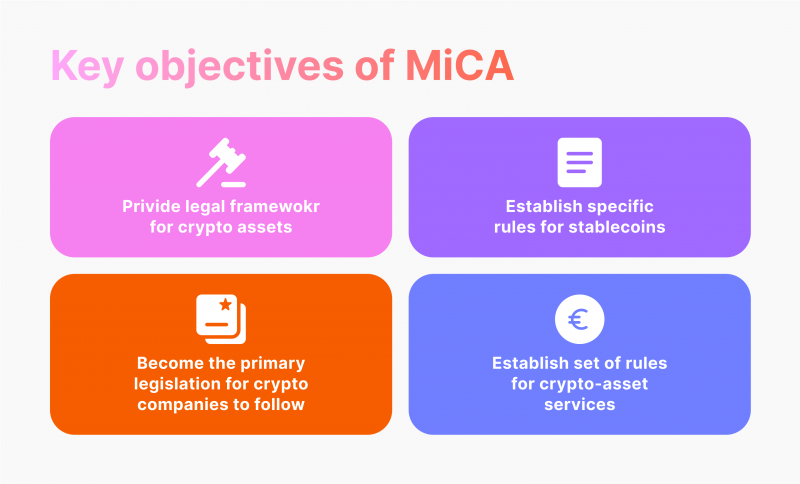
Crypto Assets Under The MiCA Regulations
The new MiCA European crypto license might bring some challenges to decentralised exchanges or businesses that provide crypto asset services. However, the aim is to avoid having another TerraLUNA crash and ensure the right money management by exchanges and token developers.
The European markets crypto regulator identifies three asset classes that are governed by MiCA.

Electronic Money Tokens
This includes stablecoins and crypto tokens that are pegged by a single fiat currency. MiCA requires these tokens to be backed by cash reserves, including Euros. Otherwise, tough restrictions might be imposed, like limiting the maximum daily transaction using non-Euro-backed tokens.
This category is also identified as “E-Money tokens” because these assets are used to transfer virtual money that holds a fiat money value.
Asset-Referenced Tokens
These are tokens and stablecoins backed by multiple fiat currencies, multiple crypto assets, other commodities, or a combination of them. The rule on this category becomes stricter when a token uses an algorithmic peg to maintain the crypto asset value with automatic attachment to a cryptocurrency.
Other Crypto Assets
These include tokens issued by blockchains, which provide access to certain products and services governing the decentralised creator economy. Also known as utility tokens, these assets are only accepted by the issuer company, which uses them as a centralised currency for its ecosystem.
Crypto Assets Licenses Under the MiCA Regulations
MiCA regulations were passed in 2023, and ongoing efforts were made to shape the types of permits and crypto operators sanctioned by the EU financial authorities.
The full adoption is expected by the end of 2024, when companies and individuals become subject to a series of titles or licenses defining crypto operators’ work.

Title I
This is more of a defining title that determines and lists the companies and operators subject to the MiCA regulations. It sets the legal requirements for publicly listed trading and exchange platforms, such as having an office in an EU country and setting AML compliance protocols.
This section addresses the works of an issuer’s utility token, consensus mechanism, distributed ledger technology and other crypto-related services.
Title II
This section describes the criteria for being regulated by the MiCA frameworks and the requirements for offering crypto services. Thus, in order to qualify as a legal crypto issuer or trader, an entity must be a legal person, craft a whitepaper, create a marketing strategy, submit these business plans to their member state and ensure continuous compliance.
Title III
This stage regards issuing and operating stablecoins backed by crypto assets, cryptocurrencies and other digital assets. These asset-referenced tokens are to be strictly regulated to minimise severe damages that might happen due to market volatility.
Entities that aim to develop a stablecoin must be registered as legal persons and financial institutions that follow the criteria set by the MiCA.
Title IV
This title regulates the work of stablecoins, or e-money, backed by a single fiat currency. An entity must be a registered financial or electronic money entity.
This law deals with the tokenomics of stablecoins, their use cases and roadmap and the applicable laws of the European financial authorities.
Titles III and IV will become applicable from 30 June 2024, while other regulations will be considered in December 2024.
Title V
This section defines who can offer crypto services and the rules they are subject to according to their location in a member-state country. These include:
- Credit institutions
- Investment banks
- Central securities depositories
- Crypto market participants
- Electronic money issuers
- Qualified investment fund managers.
- Companies working with the UCITS framework.
Title VI
These rules pertain to market manipulations and misbehaviours by participants and crypto-asset providers. They outline the repercussions of being involved in insider trading, misusing inside information and market abuse.
Title VII
This title sets the groundwork for regulators in each EU country and the effective jurisdiction in each member state. This rule indicates that every European country must appoint their regulators and ensure cooperation under a unified framework.
Member regulators must report to the European Banking Authority and European Securities and Markets Authority.
MiCA EU in 2024
The first implication of these rules will take effect in June 2024, when the regulations on stablecoins are applied to govern the development and issuing of crypto tokens backed by a single fiat currency or multiple crypto and digital assets.
The remaining MiCA regulations will be applicable six months later, which gives crypto operators and exchange platforms time to prepare and create relevant tokenomics plans and whitepaper.

By the end of 2024, the full MiCA framework will become applicable and crypto-asset service providers must abide by these rules and regulations to operate legally across the EU countries.
Once these jurisdictions take effect, the MiCA will determine if further governance will be required for excluded assets, such as NFTs and cryptos acting as financial instruments.
Excluded Assets from The MiCA Framework
As currently stated, MiCA regulations do not include NFTs, digital arts and other non-fungible crypto tokens unless they provide utilities similar to fungible tokens, such as e-money and stablecoins.
Cryptocurrencies that resemble financial instruments and securities are not governed by MiCA jurisdictions, such as trading Bitcoin, Ethereum and other cryptos.
Additionally, decentralised applications are not subject to these rules as they operate without intermediaries and do not entail the trade or exchange of crypto assets to gain access.
Conclusion
MiCA is the European regulatory body of crypto assets and blockchain-based currencies. The Market in Crypto Assets authority focuses on issuing, trading and offering stablecoins and crypto tokens by imposing strict rules for their pegging mechanism and backing system.
The MiCA EU framework sets the groundwork for crypto token developers, including the consensus protocols, AML compliance, blockchain operations and other aspects that protect investors’ rights and promote market integrity.
